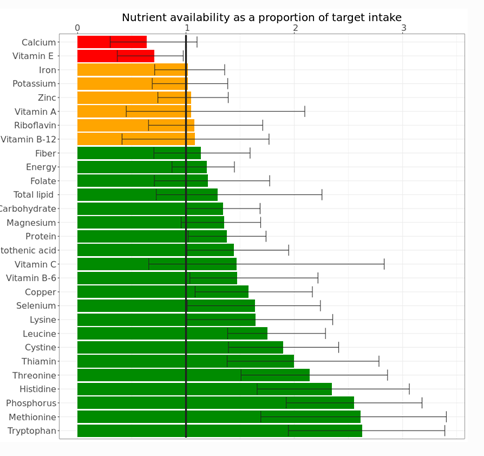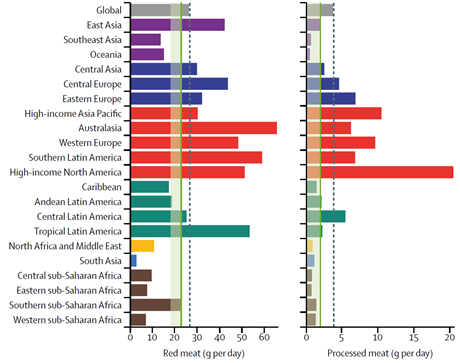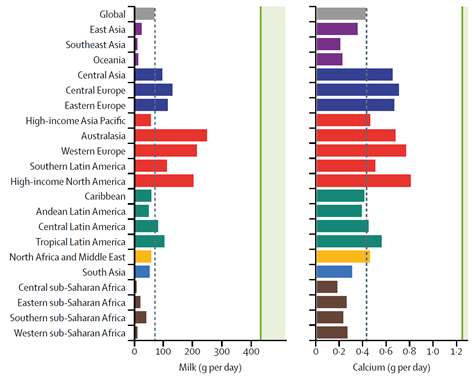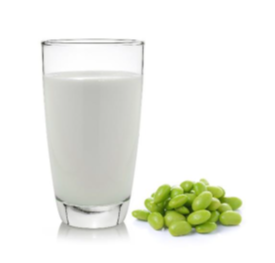Need or Greed
- World Climate Foundation

- Oct 5, 2021
- 8 min read
Updated: Sep 26, 2022
Are the current plant-based and cellular agriculture alternatives to livestock derived foods targeting a hungry world or a greedy world?
Jeremy Hill PhD, MNZM, Professor of Sustainable Nutrition, Sustainable Nutrition Initiative, Riddet Institute, Massey University, New Zealand & Chief Science & Technology Officer, Fonterra Cooperative Group
My thanks to my Sustainable Nutrition Initiative Riddet Institute colleagues Professor Warren McNabb, Dr Nick Smith, Dr Andrew Fletcher, and Charlotte van der Lee for the co-authorship of this article.

Global food system
Work done by the Sustainable Nutrition InitiativeTM on global food biomass production and nutrient availability has shown that the current food system is already plant-based with animal-sources of nutrition playing a vital role in overall nutrient provision (Smith et al., 20211). Of the 10.6 billion tonnes of food biomass that leaves the worlds farms and oceans 9.2 billion tonnes (87%) is plant material and 1.4 billion tonnes (13%) is animal-sourced. On a global basis we have mapped the flow of this food biomass (Figure 1).
On a simple biomass basis, 1.4 billion tonnes (15%) of plant-based biomass leaving the world’s farms is used as feed for animals to supplement non-human-edible feed, such as grass. This is used to produce the 1.4 billion tonnes of animal-sourced food which at face value does not look efficient, considering the environmental impact of animal production systems. However, this hides the different nutrient contributions that come from plant and animal sources of nutrition, land use suitability for cropping and major differences in the supply chain losses and waste, and non-food uses such as biofuels, shampoos and soaps, clothing etc. between the plant and animal contributions to the global food system.
Figure 1

The fact that only 1.4 billion tonnes of plant food biomass is used to feed animals also highlights that a significant proportion of animal nutrition does not come from human edible plant material but from straws, silages, pastures, food waste, etc. Livestock: on our plates or eating at our table?1 provides an excellent overview of the feed v food debate and that although livestock consume one third of global grain production, 86% of the biomass consumed by farmed animals is made up of materials currently not eaten by humans.
Seventy-five percent of what is eaten by the global population but also 91% of post-farm food losses and waste comes from plants.
Of the food material entering the food chain, 86% of animal-sourced food material produced is consumed but only 47% of the plant-sourced food material.
So, looking at global food supply, flows, consumption, and losses the facts are not always what we think they are or certainly what we may have been told. The food system is already plant-based and from the perspective of production, consumption, and waste, animal-sources of food may not be as inefficient as previously thought to be the case. But that is the case for food biomass; what about nutrition?
Nutrition supply and demand
We often hear about the “need” to produce more protein to meet the growth in demand for protein rich foods. This includes the “need” for more meat and that using current systems to produce such meat is not sustainable. We have recently shown using the DELTA Model of global nutrient provision (Smith et al., 2021) that the world not only produces enough protein to cater to the nutritional requirements of the global population today (Figure 2), but that even current production can meet the protein nutrition and indispensable amino acid requirements of a population projected to reach approximately 10 billion by 2050. The issue is not production but distribution, access, and affordability of protein.
In contrast to the global production of protein there are currently large gaps between global need and global supply of certain micronutrients that will only get bigger unless the food system changes to address these gaps. Critically, animal-sourced foods and oil crops are currently the major sources of key micronutrients in deficit, such as calcium and vitamin E, with animal-sourced foods also important sources of globally limited nutrients such as iron, zinc, potassium, vitamins A, B2, and B12.
Figure 2

A value of 1 indicates exactly meeting the target, less than 1 a shortage, and greater than 1 a surplus.
The coloured bar shows the global average nutrient availability.
Red indicates availability less than the lower end of the target range, Orange availability between the low end and just meeting the target, and Green clearly exceeding the target.
The error bars show the range between the 10 th and 90 th population percentiles based on country level averages (i.e. everyone in the country has an equal share).
For most nutrients there is a wide variation in their availability between countries, and clearly for some countries, access to nutrition (including protein) drops below target intake. These gaps have the potential to increase with increasing global population and especially if, as is currently the case, the population increase is in countries where access to nutrition is already below target requirements.
‘Meating’ needs?
Let’s have a look at the current growth in meat production and how much of this is meeting needs rather than catering to the greedy? Here I use the term “greed” in the context of eating a particular food beyond the point of its contribution to a balanced diet or requirement for nutrients for whatever reason without moral judgement. Never-the-less in such a context it is hard to argue that the behaviour is in keeping with sustainability as over-consumption can be considered a form of food and nutrient waste.
According to the Australian Department of Agriculture global meat production grew 58% over the period 1998-2018. But how much of this growth is servicing need rather than greed? How many of the existing or new consumers are eating meat above the recommended target intake? Quite a considerable number according to The Global Burden of Disease Study3 (Figure 3 solid green line). Yet as with overall protein production and consumption as shown previously in Figure 2, the consumption of meat is geographically uneven.
Figure 3

The dotted line represents global average consumption levels and shaded green area the uncertainty in the level of target intake. Reproduced from Afshin et al. 2019 under the CC BY 4.0 license3.
Milking the planet?
At 844 million tonnes milk represents 60% of the animal-sourced global food biomass, so how does its consumption compare with meat? Clearly the picture for milk is very different, as is calcium intake (Figure 4), with the per capita consumption of milk falling short of recommended intake in all regions of the world.
Figure 4

The dotted line represents global average consumption levels and shaded green area the uncertainty in the level of target intake. Reproduced from Afshin et al. 2019 under the CC BY 4.0 license.
Our work in the Sustainable Nutrition InitiativeTM has found that although milk represents 60% of animal-food biomass, milk is less than 8% of the total global plant and animal sourced food biomass and contributes 49% of the calcium, 24% of vitamin B2, 22% of vitamin B12, 15% of vitamin A, 12% of the protein, up to 18% of the indispensable amino acids, and makes a significant contribution to a range of other nutrients consumed by the global population. Moreover, at only 7% of global dietary energy this makes milk not only nutrient rich (content and range of nutrients) but also nutrient dense (content and range of nutrients compared to number of calories).
Clearly milk plays an important role in global nutrition and from consumption v recommended intake perspective it would appear we should be producing more milk not less. But that’s nutrition and health, what about environment?
Although the food system in its entirety is estimated to contribute 20-30% of total GHG on a carbon equivalent basis, dairy’s contribution is 2-3%. Considering milk’s global nutrient contribution, its nutrient richness and nutrient density, the answer to the question should we reduce dairy consumption to save the planet is clearly no and dairy looks like a pretty good deal. A good deal, but not a perfect deal and, for the very reason that it is so important to global nutrition, we should focus on making large improvements to the efficiency of milk production and its environmental footprint, especially if we need to produce more rather than less milk in the future.
Alternative Reality?

Of course, another often publicised approach would be to attempt to replace milk and other animal-sourced foods with alternative sources of nutrition that give lower environmental footprints.
As discussed earlier in the article, the issue with global nutrition is largely about affordability and access, i.e. what the global population needs. As such ‘plant-based’ and new technologies such as precision fermentation or mammalian cellular production should aim to produce substitutes in more affordable and accessible formats that provide the same nutritional benefits as existing plant and/or animal sources of those nutrients. We would also argue that improvements to the productivity and sustainability of existing plant-sourced or animal-sourced foods should look to do the same.
Whether consumers of such foods are actually doing good rather than just feeling good about what they are doing will depend on:
What this means for global food biomass production, losses, and waste.
Being as nutritious as the foods they are substituting.
Having lower environmental footprints for water, land use etc. as well as just GHG per unit of nutrition.
Being consumed responsibly to the point of need and not well above what is required as a result of “greed”.
Being comparatively cheaper to produce and distribute and sold in such a way that it increases global access to nutrition.
Will such companies as Beyond Meat transform the global food system by democratising it and providing more access to affordable nutrition or concentrate control and remain beyond the reach of many global consumers?

The Sustainable Nutrition InitiativeTM was established to help create a better understanding of the global food system and particularly the critical issue of how it can provide all the nutrients required by everyone on the planet. Its purpose is to help people explore what changes to the system may be possible, but also what will be practical.
If we are to have a sustainable world and, by implication, a sustainable food system, then there is certainly the need for radical change. However, we do not subscribe to the view that everything needs to be disrupted and that radical improvements in the existing food production system will be equally if not more important than radical changes to the food production system.
But to be clear there will be no room for laggards, and we do see an important role for new ways of producing the nutrients we require, such as precision fermentation, but that these will be complementary to rather than totally disruptive to existing food chains. In doing so everyone has the right to choose the diets they want to follow and certainly for those that can afford to do so, have significant choices they can follow.
When it comes to the food system, perhaps the most important changes of all are the changes we make ourselves and here I would start with consuming closer to what we need and cutting back on the greed.
The thinking failures of today will be the system failures of tomorrow
Acknowledgements
The Riddet SNi team would like to thank our many international collaborators for all their work, insights, and efforts to help prevent thinking failures.
References
1. Use of the DELTA Model to Understand the Food System and Global Nutrition. Smith et al. 2021. The Journal of Nutrition. DOI:10.1093/jn.nxab199 & www.sustainablenutritioninitiative.com
2. Livestock: On our plates or eating at our table? A new analysis of the feed/food debate.
Mottet et al. 2017. Global Food Security, DOI:10.1016/j.gfs.2017.01.001
3. Health effects of dietary risks in 195 countries, 1990-2017: a systematic analysis for the Global Burden of Disease Study 2017. Afshin et al. 2019. The Lancet. DOI: 10.1016/S0140-6736(19)30041-8


